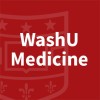
Randomized Trial of Home Versus Clinic-based Screening for Sexually Transmitted Infections
ChlamydiaGonorrheaThis study randomizes women using long-acting reversible methods of contraception to home-based STD screening through the mail compared to screening available in a clinical setting. We hypothesize that women randomized to home-based screening will be more likely to complete screening.

Personal Responsibility Education Program Innovative Strategies: Digital Initiative for Youth
Reproductive HealthContraception1 moreThis randomized control trial (RCT) will assess an innovative demonstration project to improve adolescent sexual and reproductive health among highly mobile and marginalized youth in Fresno County, California. The Digital Initiative for Youth intervention combines existing, in-person, group-based, comprehensive sexual health education with wraparound digital technologies. The technological component was designed by Youth+Tech+Health using a "youth-centered" design approach and the intervention is implemented by Fresno Economic Opportunities Commission (Fresno EOC). The University of California, San Francisco is the external evaluator. The RCT will assess health and behavioral outcomes at three time points (baseline, 4 months, 10 months).

GPS: Adaptation Trial of an HIV Prevention Counselling Program for HIV-positive and HIV-negative...
HIV/AIDSSexually Transmitted Infection1 moreGPS is a sexual health promotion and HIV prevention peer-delivered counselling program. The GPS program has 4 parts: information provision about HIV and sexually transmitted infections, motivational interviewing counselling, sexual health behavioural skills building, and linkage to care. The adaptation grant has three goals: 1) to establish a multi-region and multi-sectoral team that can deliver the revised program across a variety of settings, 2) to learn how best to deliver this program as individual counselling program and also how to adapt this program for HIV-negative MSM, and 3) to pilot the individual program in 5 settings across Ontario and British Columbia. The research team will evaluate the pilot adaptation through mixed methods, employing a quantitative questionnaire and one-on-one semi-structured interviews.

Advancing HIV Prevention and Linkage to Care Among MSM With Gamification
HIV InfectionsSexually Transmitted DiseasesThis study is a pilot evaluation of 'Stick To It', a behavioral intervention based on the concept of gamification. The objective of the program is to encourage young men who have sex with men (MSM) to be regularly screened for HIV and sexually transmitted infections (STIs) and to adopt safer sexual behaviors, with the ultimate goal to decrease HIV and STI incidence. Gamification is the application of game elements, like points, badges, and rewards, to non-game settings.

An STD Prevention Intervention for Men Newly Released From Jail
Sexually Transmitted DiseasesRisk BehaviorStudy participants who are exposed to the intervention will: 1)report more condom use during sexual episodes; 2) have fewer new and repeat STD infections 3)demonstrate greater risk reduction, communication, and anger management skills; 4) report fewer substance use behaviors, and 5)report more health care seeking activities, than the participants in the control group

Multicomponent Intervention to Reduce Sexual Risk and Substance Use
HIVSexually Transmitted Infections1 moreThe objective is to expand and refine an intervention for transgender women (TW) into a 7-session individual- and group-based intervention that is scalable for community settings to reduce sexual risk and substance use and to increase stigma-coping and risk-buffering behaviors among TW in NYC. The investigators will pilot test the intervention with 20 TW and subsequently, conduct a randomized controlled trial with 240 TW to compare the intervention to a wait list control condition.

Evaluation of Polyurethane Male Condoms
ContraceptionPrevention of Sexually Transmitted InfectionsThe clinical study will compare two lubricated polyurethane male condoms of different thickness with a marketed lubricated control male condom made of natural rubber latex. This crossover study will randomize 300 heterosexual couples to the sequence in which they use five condoms of each of the three study condom types. The clinical failure (breakage and slippage) rates of the two polyurethane condoms will be compared to the clinical failure (breakage and slippage) rate of commercial natural rubber latex control condom using a statistical test of non-inferiority. The study will also compare the acceptability of the two polyurethane condom different thickness with that of the natural rubber latex control condom obtained from interviews and questionnaires with subject couples.

Combo-PEP: Multipurpose Prevention of Post-Exposure Prophylaxis Regimens
Sexually Transmitted DiseasesThe study will determine tissue pharmacology of a single dose of doxycycline for sexually transmitted infection (STI) Post-exposure Prophylaxis (PEP).

TITLE SAGCS2 Protocol 2.3 + Amend 1
ContraceptionPrevention of Sexually Transmitted InfectionsThe clinical study will compare two lubricated polyurethane male condoms of different thickness with a marketed lubricated control male condom made of natural rubber latex. This crossover study will randomize 300 heterosexual couples to the sequence in which they use five condoms of each of the three study condom types. The clinical failure (breakage and slippage) rates of the two polyurethane condoms will be compared to the clinical failure (breakage and slippage) rate of commercial natural rubber latex control condom using a statistical test of non-inferiority. The study will also compare the acceptability of the two polyurethane condom different thickness with that of the natural rubber latex control condom obtained from interviews and questionnaires with subject couples.

Improving the Diagnosis of Sexually Transmitted Infections in Emergency Rooms
Sexually Transmitted InfectionA point-of-care laboratory (POC) was set at North Hospital, Marseille, France for the diagnosis in less than two hours of sexually transmitted infections caused by known pathogens, close to the reception of Emergency service. In this instance 30% of patients have no etiological diagnosis after the POC sexually infection transmitted tests . Most sexually transmitted infections can be diagnosed from an anal swab which is not routinely performed. In this study, we suggest to test the hypothesis that anal swab in addition to the routine genital swab would increase by at least 5% the diagnosis capacity of sexually transmitted infections after the POC tests.
